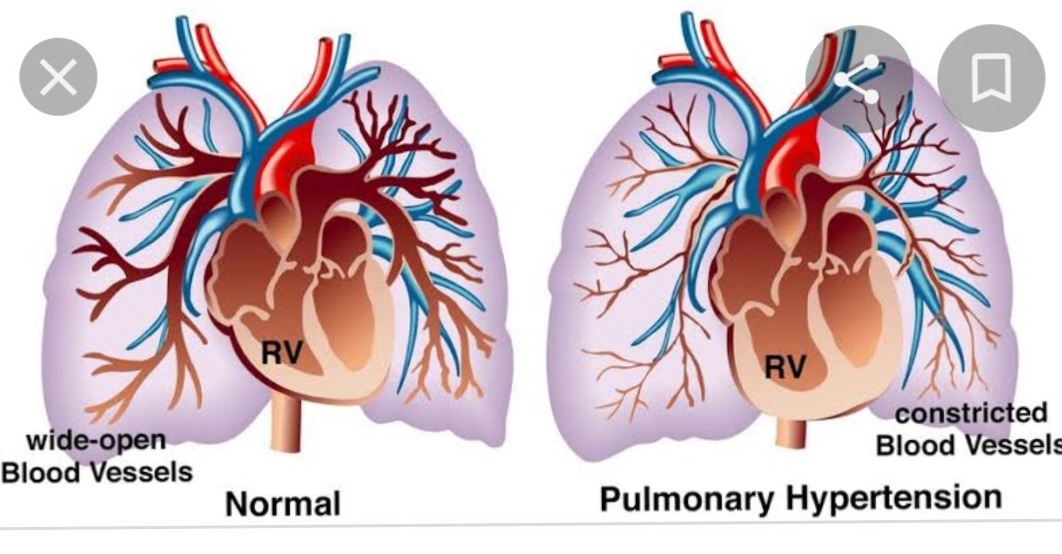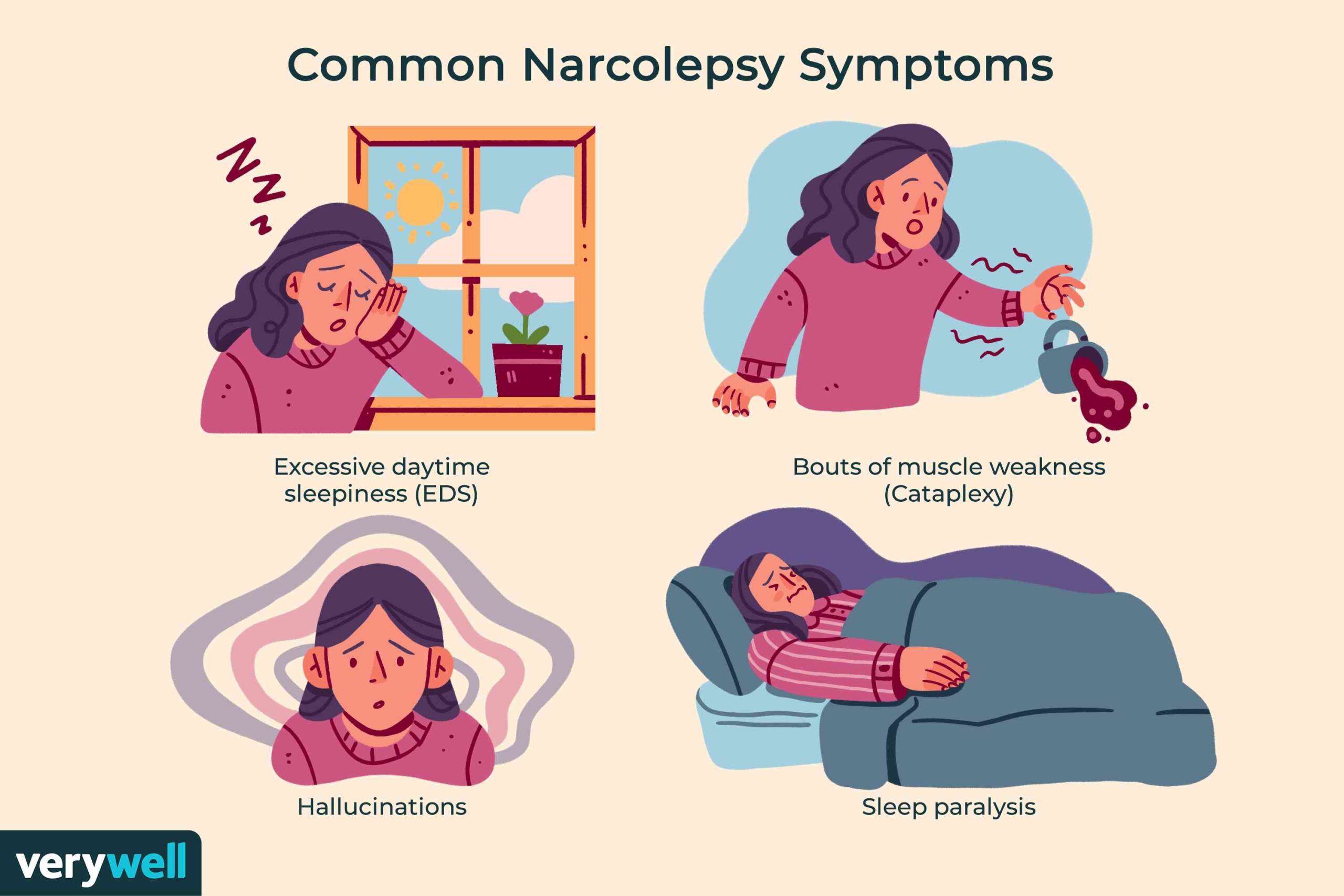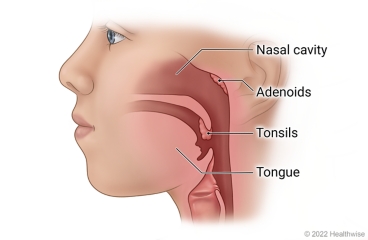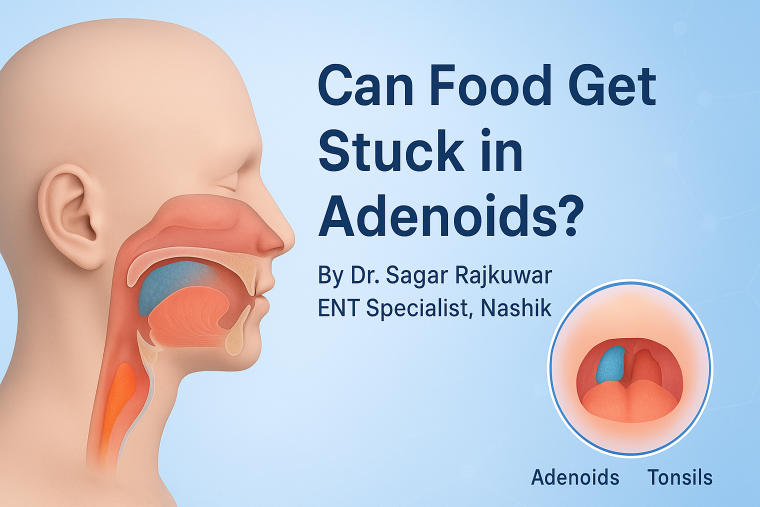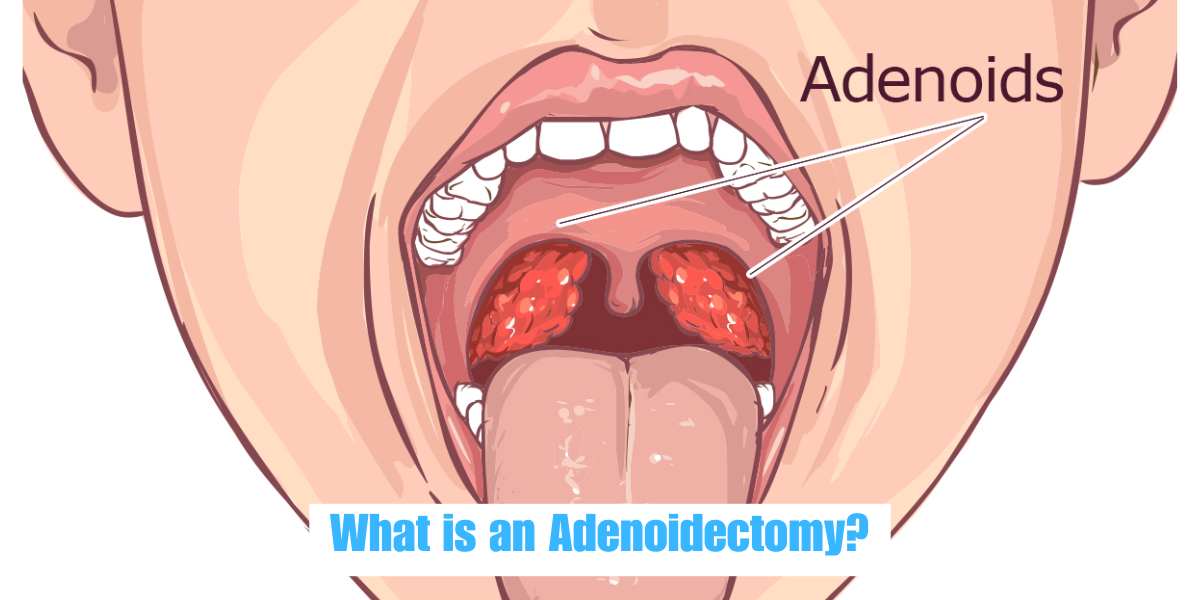What Are Nosebleeds A Symptom-various aspects-
A nosebleed occurs when a blood vessel in the nasal lining ruptures. Nosebleeds can be triggered by infections, trauma, allergic reactions, nose picking, or by inserting an object into the nostril. Epistaxis is another term for a nosebleed. Nasal bleeding is frequent in children and is typically not a serious condition.
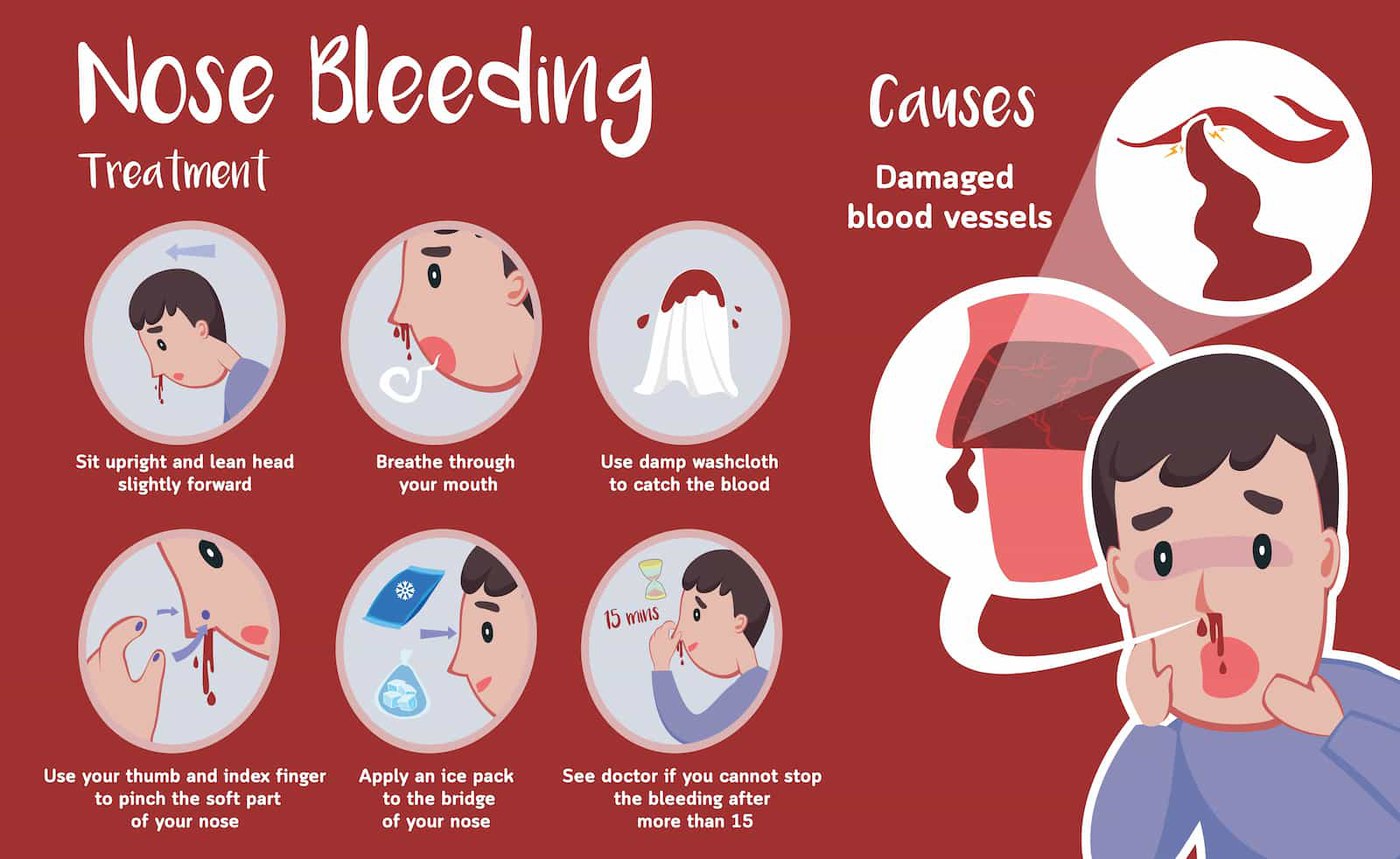

What is epistaxis?
Epistaxis refers to the medical term for a nosebleed. A nosebleed — which indicates a loss of blood from the tissue lining the inside of your nose — can happen in one nostril or both. Typically, it affects only one nostril.
Your nose contains numerous tiny blood vessels. These vessels function to warm and moisten the air that you inhale. However, they are positioned close to the inner surface of your nose. When air passes through your nose, it may dry out and irritate your blood vessels. This makes them very susceptible to injury or rupture, leading to a nosebleed.
Approximately 6 in 10 individuals will experience at least one nosebleed at some point in their lives. Most nosebleeds are minor and resolve with home care. However, if bleeding is severe or you experience additional symptoms (such as vomiting or difficulty breathing), you should seek medical help at the emergency room.
Types of nosebleeds
There are two primary types of nosebleeds. Healthcare professionals categorize them based on the location of the bleeding.
Anterior nosebleed
An anterior nosebleed originates in the front of your nose on the lower section of the wall that divides the two sides of your nose (septum). The capillaries and small blood vessels in this front region of your nose are delicate and can easily rupture and bleed. This is the most prevalent type of epistaxis and is generally not serious. These nosebleeds can often be treated at home.
Posterior nosebleed


A posterior nosebleed takes place deep within your nose. This type is caused by bleeding in larger blood vessels located at the back part of your nose near your throat. It can lead to significant bleeding, which may travel down the back of your throat. Immediate medical attention may be necessary for this form of nosebleed.
Symptoms and Causes
What are the signs of a nosebleed?
Typically, the only symptom you may experience is blood flowing from your nose. If you have a posterior nosebleed, some blood could run down the back of your throat into your stomach. This may result in an unpleasant taste at the back of your throat and can make you feel queasy.
If you experience other symptoms, it might indicate a medical issue.
What results in a nosebleed in one nostril?
Most nosebleeds affect just one nostril, but it is possible for both to bleed simultaneously. Epistaxis has numerous causes. Thankfully, most of them are not serious.
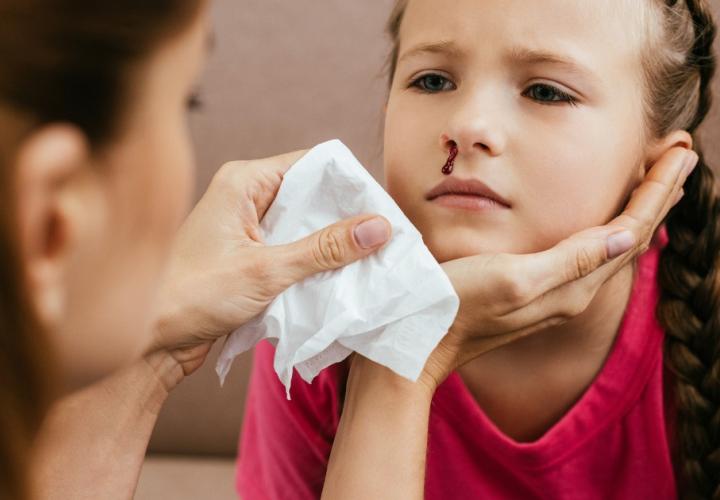

The primary reason for nosebleeds is dry air. The air tends to be drier in:
Hot, low-humidity areas
Locations at high elevations
Warmed indoor environments
Dry air leads to your nasal membrane (the sensitive tissue inside your nose) drying out and becoming scaly or fissured. It then becomes more prone to bleeding when touched, scratched, or during nose blowing.
You might also experience a nosebleed if you:
Insert something into your nose
Injure your nose and/or face
Have a deviated septum
Experience an upper respiratory infection or sinus infection that causes frequent sneezing, coughing, and nose blowing
Have allergic or nonallergic rhinitis (swelling of your nasal lining)
Regularly use antihistamine or decongestant nasal sprays, which can dehydrate your nasal membranes
Take anticoagulant medications like aspirin, NSAIDs, or warfarin
Inhale chemicals from cleaning products, workplace fumes, or other potent smells
Use recreational drugs (like cocaine) that you sniff through your nose
Less frequent causes of nosebleeds consist of:
Alcohol consumption
Bleeding disorders, such as hemophilia or von Willebrand disease
High blood pressure
Atherosclerosis
Facial and nasal surgical procedures
Nasal tumors
Nasal polyps
Immune thrombocytopenia
Leukemia
Hereditary hemorrhagic telangiectasia
Pregnancy
What leads to nosebleeds while sleeping?
The causes of nosebleeds during sleep are similar to those that trigger them during the day. Dry air, allergies, and upper respiratory infections harm the sensitive nasal membrane lining your nose. Lying with your head turned to the side might also apply direct pressure on your nasal cavity and result in epistaxis at night.
Risk factors
Anyone can experience nosebleeds. Most individuals will have at least one instance in their lifetime. However, certain individuals are more predisposed to nosebleeds. These include:


Children aged 2 to 10. Dry air, colds, allergies, and inserting fingers and objects into their nostrils increase the likelihood of nosebleeds in children.
Adults between the ages of 45 and 80. Blood may clot more slowly as you near 50. Around this age, you’re also more likely to experience high blood pressure, atherosclerosis (thickening of arterial walls), or a bleeding disorder.
Individuals who are pregnant. Blood vessels in your nose expand during pregnancy, putting increased pressure on the fragile blood vessels in your nasal lining.
People on blood-thinning medications. These medications include aspirin and warfarin.
People with blood clotting disorders. These consist of hemophilia and von Willebrand disease.
Diagnosis and Tests
When should I be concerned about a nosebleed?
While witnessing blood flowing from your nose can be distressing, the majority of nosebleeds are not serious. Typically, you can take care of them at home. However, you should contact a healthcare provider if:
You experience frequent nosebleeds
You display symptoms of anemia (feeling weak, faint, fatigued, cold, or short of breath, or exhibiting pale skin)
You have a nosebleed around the time you begin a new medication
You experience nosebleeds along with unusual bruising across your body — this combination may signify a more serious issue such as a blood-clotting disorder (hemophilia or von Willebrand disease), leukemia, or a nasal tumor
Reach out to your pediatrician if your child is younger than 2 and experiences a nosebleed. Regardless of your child’s age, it’s wise to mention any nosebleeds during their next well-check.
How practitioners diagnose this issue
A healthcare provider will ask you various questions regarding your nosebleed, including:
Duration (in minutes) of your nosebleed
Approximate quantity of blood that was lost
Frequency of occurrence
Whether the bleed involved one or both nostrils
They will also inquire about:
Medications, including over-the-counter (OTC) blood-thinning medications like aspirin and medications for colds and allergies
Your family medical history, including any background of blood disorders
Your consumption of alcohol and/or any recreational drugs that you may have snorted
Subsequently, your provider will examine your nose to identify the bleeding source and its potential cause. They utilize a small speculum to keep your nostril open and employ different light sources or an endoscope (lit scope) to view inside your nasal passages.
Your provider may apply topical medications to numb (anesthetize) the lining of your nose and constrict blood vessels. Your provider might also clear clots and crusts from within your nose. This process can be uncomfortable but is not painful.
At times, they may request X-rays, a CT scan, or blood tests to investigate bleeding disorders, vascular abnormalities, or nasal tumors.
Management and Treatment
What are the treatments for epistaxis?
The treatment for a nosebleed varies based on the reason for the bleeding. Your provider will clarify what is needed in your case. Epistaxis treatment may consist of:
Nasal packing. Your healthcare provider places gauze, special nasal sponges or foam, or an inflatable latex balloon inside your nose to apply pressure at the bleeding site. Your provider may prefer to leave the material in position for 24 to 48 hours before taking it out.
Cauterization. This process entails using a chemical substance (silver nitrate) or heat energy (electrocautery) to seal the bleeding blood vessel. Your provider administers a local anesthetic in your nostril initially to numb the inside of your nose.
Medication adjustments/new prescriptions. Decreasing the quantity of blood-thinning medications you utilize — or discontinuing them — might be beneficial. Additionally, medications for controlling blood pressure may be required. Your provider might prescribe tranexamic (Lysteda), a medication designed to assist blood clotting.
Foreign body removal. Should the cause of the nosebleed be a foreign object, your provider will extract it.
Surgery. Surgical intervention can mend a broken nose or rectify a deviated septum (septoplasty).
Ligation. In this method, your provider ties off the problematic blood vessel to halt the bleeding.
How can I stop a nosebleed at home?
Adhere to these steps to stop a nosebleed:
Maintain composure and breathe through your mouth.
Sit upright with your head positioned slightly forward.
Utilize your thumb and index finger to pinch the soft sides of your nose (just above your nostrils).
Wait for the bleeding to cease. Employ a tissue or damp washcloth to catch the blood.
At-home care is often sufficient. However, some nosebleeds require medical attention at a hospital. Have someone transport you to the nearest emergency room or call 911 (or your local emergency service number) if:
You are unable to stop the bleeding after more than 15 to 20 minutes of pinching your nose.
The blood loss is significant (more than 1 cup).
You are on blood-thinning medications (such as aspirin or warfarin) or have a blood-clotting disorder, and the bleeding won’t stop.
You are experiencing difficulty breathing.
You have swallowed blood and cannot stop vomiting.
Your nosebleed occurred following a blow to your head or a serious injury (fall, car accident, or impact to your face or nose).
Can I drink water after a nosebleed?
Yes, it’s advisable to drink ample fluids following a nosebleed. Good choices include water, juice, and other non-caffeinated beverages. After you experience epistaxis, some blood may flow down the back of your throat into your stomach. This might induce feelings of nausea. However, consuming water will not influence a nosebleed.
Can you die from a nosebleed?
Nosebleeds that take place higher on your septum or deeper within your nose may be more difficult to control. Nonetheless, nosebleeds are seldom life-threatening.
Prevention
What can I do to prevent nosebleeds?
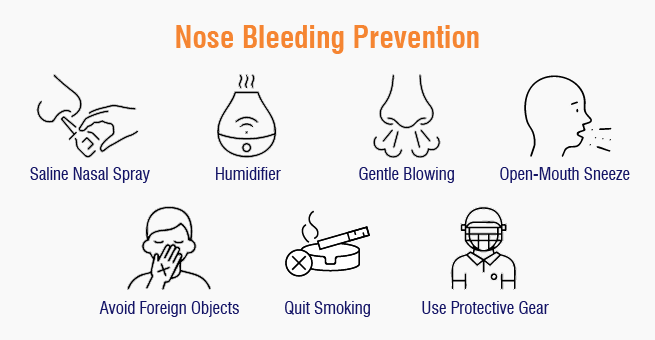

Here are several recommendations for preventing nosebleeds:
Use a saline nasal spray or saline nose drops two to three times daily in each nostril to maintain moisture in your nasal passages. You can buy these items without a prescription, or you can prepare them at home.
Add a humidifier to your heating system or operate a humidifier in your bedroom during the night to introduce moisture into the air.
Apply a nasal gel or ointment in your nostrils using a cotton swab. Bacitracin, Vaseline, or Ayr Gel are examples of over-the-counter ointments available for use. Be careful not to insert the swab more than 1/4 inch into your nose. These gels and ointments can usually be found at most pharmacies.
Do not blow your nose too hard.
Sneeze with your mouth open. Always sneeze into a tissue or your elbow.
Refrain from inserting anything solid into your nose, including your fingers.
Limit your intake of medications that may increase bleeding, such as aspirin and ibuprofen. Always consult with your healthcare provider before adjusting any of your medications. This is particularly important for prescription medications such as warfarin (Coumadin) and nonsteroidal anti-inflammatory drugs (NSAIDs).
Contact your provider if you are unable to easily manage your nasal allergy symptoms with over-the-counter or prescription medications. Be sure to adhere closely to the instructions when using over-the-counter products. Overuse can lead to nosebleeds.
Stop smoking. Smoking dehydrates and irritates your nasal passages.
Use protective headgear if you engage in activities that may cause an injury to your face and nose.
To assist your child in preventing nosebleeds, instruct them not to insert objects into their nose. Keeping your child’s fingernails trimmed is also a good practice. Your pediatrician can provide additional guidance as well.
Can nosebleeds be a symptom of something?
Frequent nosebleeds could be an indication of a different condition like hypertension, a blood clotting issue, or a growth in the nasal passages or sinuses. Anticoagulants, including warfarin (Coumadin), clopidogrel (Plavix), or aspirin, may lead to or exacerbate nosebleeds.

